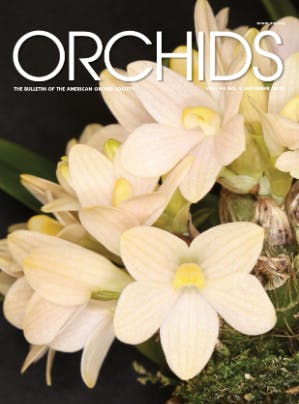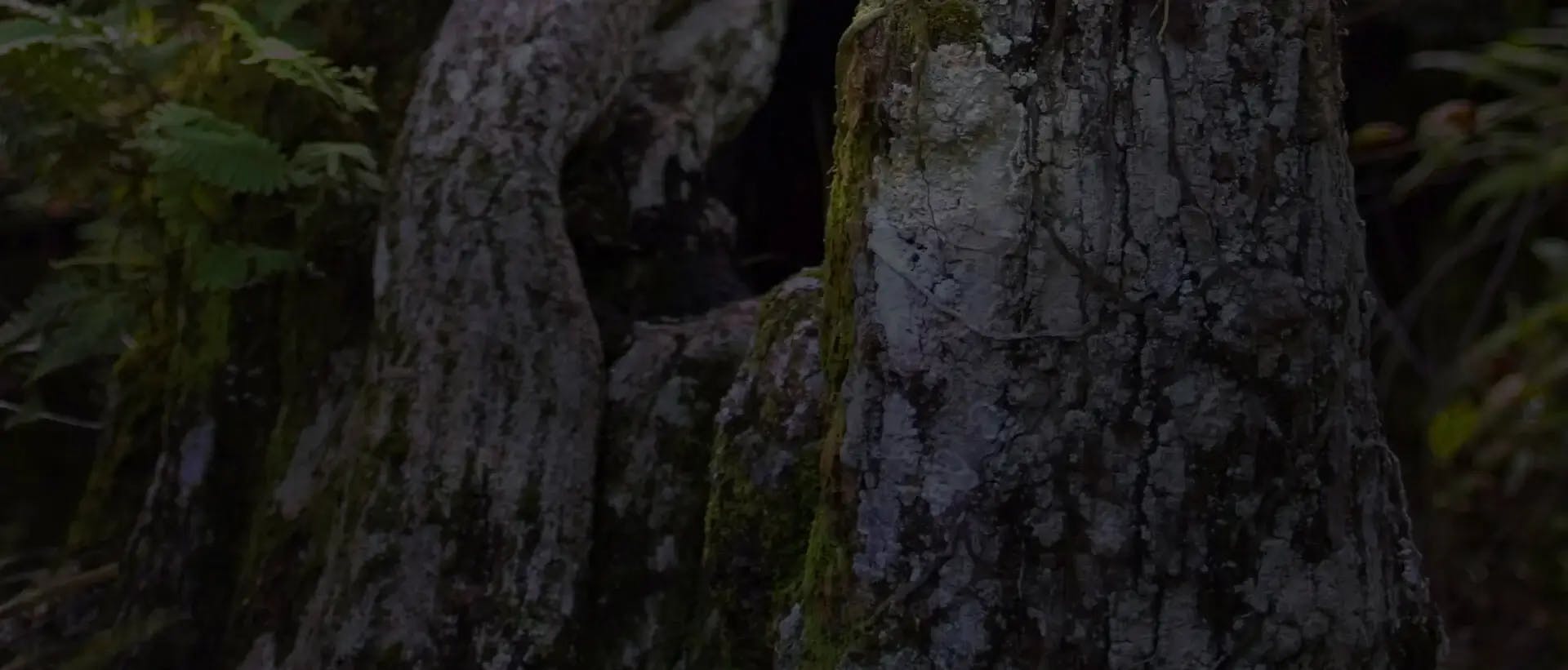When I first noticed those corky blisters on the leaves of my orchids, I thought it was some kind of aberrant scale. I tried scratching them off and even tried excising them with an X-Acto knife, though of course it wasn’t scale at all. The culprit was edema, also known as oedema; swelling caused by excess fluids.
In orchids, this swelling is caused by improper watering, when the roots absorb
more water than can be transpired by the leaves. Typically, this happens during the
cooler months in late winter and early spring, especially during extended periods
of cool, cloudy weather. If you water on a gray day when the plant is not actively growing or you water late in the day on a day when the nighttime temperatures turn cool, edema blisters may form. The excess water absorbed by the plant causes a swelling of plant cells that produces a blister on the leaf.
[1] This bifoliate cattleya has just developed edema. The blisters are always raised. Sunken spots would be suggestive of a bacterial infection causing a collapse of the cells. Sometimes edema is mistaken for scale, though scale can easily be rubbed off with alcohol and a cotton swab.

Proper watering is the key to preventing edema blisters from forming. During the warm growing season when plants are in active growth and the nighttime temperatures are warm, you can water your plants with wild abandon. You can water in the morning, the afternoon or at night. When the humidity is very low, many orchid growers find it difficult to properly hydrate their orchids because they dry out so quickly.
[2] The edema on this cattleya leaf shows the blistering from the swollen plant cells.

Some selectively water in the evenings after the sun has set so their plants will stay wet overnight and soak up water. Fertilizer shouldn’t be applied in the evening hours. Darkness, combined with water and nutrients, is a formula for fungal and bacterial growth. Most orchids grow in a nutrient poor environment, so even though the plants may be wet at night from heavy dews and rain, there is insufficient food to fuel rots and the like in nature. If you decide a nighttime watering regime is right for you, water at dusk and then apply your fertilizer in the early morning.
[3] In severe cases, the raised blisters can coalesce as on these cattleya leaves. Though they are unsightly, the blisters do not spread or otherwise damage the plant.

My go-to guy, Courtney Hackney, recommends nighttime watering during periods of low humidity and warm nighttime temperatures and notes some of the additional benefits from this approach. Your plants will be well hydrated so you will not have to worry about fertilizer toxicity. The roots will be ready to take up fertilizer as their surface condition has changed from hard and stiff to soft and pliable. If you live in an area with hard water, salts that accumulate in the medium, pots and roots will become soluble overnight, allowing them to be flushed out the next morning while fertilizing. Once the humidity rises or nighttime temperatures drop below the 65–70 F (18–21 C) range, you should resume the more conventional morning watering regimen.
[4] This phalaenopsis leaf recently developed edema, showing translucent blisters with green tissue underneath. Other edemas have a section in the middle with a corky appearance (the blue spotting is the residual copper fungicide spray).

Watering during the cooler months is quite different than during the main growing season. Many orchids go through a winter resting period and some an outright dormancy, so the orchid’s need for water and fertilizer is at a minimum. Your frequency of watering will be perhaps a quarter or a half of your summertime watering frequency. Water early in the morning, finishing before noon or so. Do not water on gray or rainy days, even if it is your “scheduled” watering day.
[5] The raised blisters are clearly displayed on this phalaenopsis leaf. Some of the edema is translucent, and some have taken on a corky appearance (image sent to www.staugorchidsociety.org for diagnosis).

Orchid growers spend a lot of time worrying about different pests and diseases that might be afflicting their plants. I have come to believe that there are more physiological and cultural issues that cause problems with your orchids than those caused by pests and diseases. If you have access to the AOS Guide on Orchid Pests and Diseases, read or reread Tom Sheehan’s discussion on physiological disorders caused by improper watering, light, nutrition, potting faults and other conditions (Sheehan 2002). His comments are as true today as the day they were written.
[6-7] Edema can also be expressed on flower segments, as on this cattleya. In fact, edema can form on upper or lower leaf surfaces, stems, sepals or petals.


— Sue Bottom started growing orchids in Houston in the mid-1990s after her husband Terry built her first greenhouse. They settled into St. Augustine, Florida, Sue with her orchids and Terry with his camera and are active in the St. Augustine Orchid Society, maintaining the society’s website and publishing its monthly newsletter. Sue is also a member of the AOS Editorial Board (sbottom15@hotmail.com).
For Further Reading
Cating, R.A., Palmateer, A.J., Stiles, C.M., Harmon, P.F. and Davison, D.A. 2014. Physiological Disorders of Orchids: Oedema. University of Florida, IFAS Extension, Plant Pathology Department, PP244, Revised April 2014. http://edis.ifas.ufl.edu/pp164. Accessed July 16, 2015. Sheehan, T.J. 2002. Physiological Disorders of Orchids. p. 4–21. In: Orchid Pests and Diseases, Revised Edition, T.J. Watson editor. American Orchid Society, Delray Beach, Florida.










